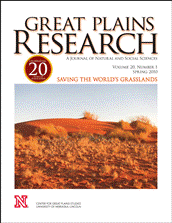Center for Great Plains Studies

Great Plains Research: A Journal of Natural and Social Sciences (through 2013)
Date of this Version
2003
Document Type
Article
Abstract
The boundary of Canada and the United States is celebrated as the longest undefended border in the world. Despite its length and seeming prominence in North American history, only recently has the border received more than passing attention from historians and geographers. In his insightful and carefully documented book, Bruno Ramirez contends that this is partly because migrants from the United States to Canada, and from Canada to the United States passed through a porous border until the 1900s. With the exception of French Canadians migrating from Quebec to New England, Canadian immigrants did not create the kinds of ethnic institutions or residential clusters that historical geographers generally associate with immigrant settlement. Canadian settlers in the United States and their counterparts in Canada were the "invisible settlers" of the late 19th and early 20th centuries.


Comments
Published in Great Plains Research Vol. 13, No.1, 2003. Copyright © 2003 Center for Great Plains Studies, University of Nebraska – Lincoln. Used by permission.